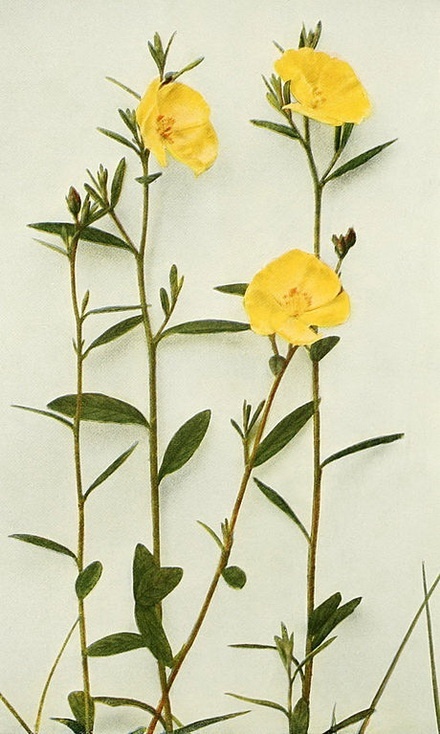Moth larva enforces self-pollination in Canada Frostweed
The larva of the moth Mompha capella inhabits a flower bud of Canada Frostweed and prevents it from opening, as Neil Kirk Hillier and fellow researchers show. Pollinators cannot visit the flower, which has to pollinate itself instead.
Canada Frostweed (Crocanthemum canadense), a perennial plant of Northern America, is attractive to the moth Mompha capella, which lays its eggs on it. Then something unusual happens: the plant loses control over its reproduction.
The plant produces yellow flowers that normally open just after sunrise, revealing the female pistil and male stamens. Bees and flies visit the flowers, transferring the pollen from one to the next, so that the flowers are cross-pollinated. Multiple stamens lay against the five yellow petals, retracted from around the pistil to prevent self-pollination. Within a few hours, a flower’s own pollen has disappeared and the pistil is covered with pollen from other flowers. The petals fall off, the green sepals close over the pistil and protect the developing fruit with seeds within.
But when a moth has left its eggs on the plant, the larvae that hatch from these eggs crawl into a flower bud, one larva per bud. And then things are very different, Neil Kirk Hillier and colleagues discovered.
Cap
The larvae start to eat. And they don’t do it randomly, but first feed on the bases of the still folded petals. The severed petals no longer grow and don’t unfold when the flower should open, but remain folded like a cap over stamens, pistil and developing fruit, keeping the flower closed. Pollinators cannot enter. Because the stamens are compacted around the top of the pistil, the pollen is in contact with the pistil and seeds develop through self-pollination. Almost all of them will be consumed by the larva in the end.
Frostweed duped
As a consequence, the Canada Frostweed plant produces less offspring. A yellow flower produces on average about forty seeds, and a larva saves only one or two of them. Reproduction, however, is not in immediate danger. This is because the plant not only produces a small number of yellow flowers that open, unless caterpillar disturbs the process, but also a large number of flowers without yellow petals and only four or five stamens, which appear later in the year. These flowers never open and produce seeds through self-pollination. While they make less seeds than yellow, open flowers (only six or seven seeds per flower), there are much more of them. So seeds are produced anyway.
But seeds of open flowers that develop after cross-pollination are necessary for the exchange of hereditary material. In plant populations with a high infestation rate, such exchange is limited, and genetic variation is low.
Larva safer?
The researchers don’t mention what benefit a larva gains by intervening in the flowering process. If the flower opened and had been pollinated normally, seeds to be consumed would have appeared as well. Perhaps in a closed flower, the larva is safer from predators and parasites.
Willy van Strien
Photo: Homer D. House, 1918 (Wikimedia Commons)
Source:
Hillier, N.K., E. Evans & R.C. Evans, 2018. Novel insect florivory strategy initiates autogamy in unopened allogamous flowers. Scientific Reports 8: 17077. Doi:10.1038/s41598-018-35191-z
